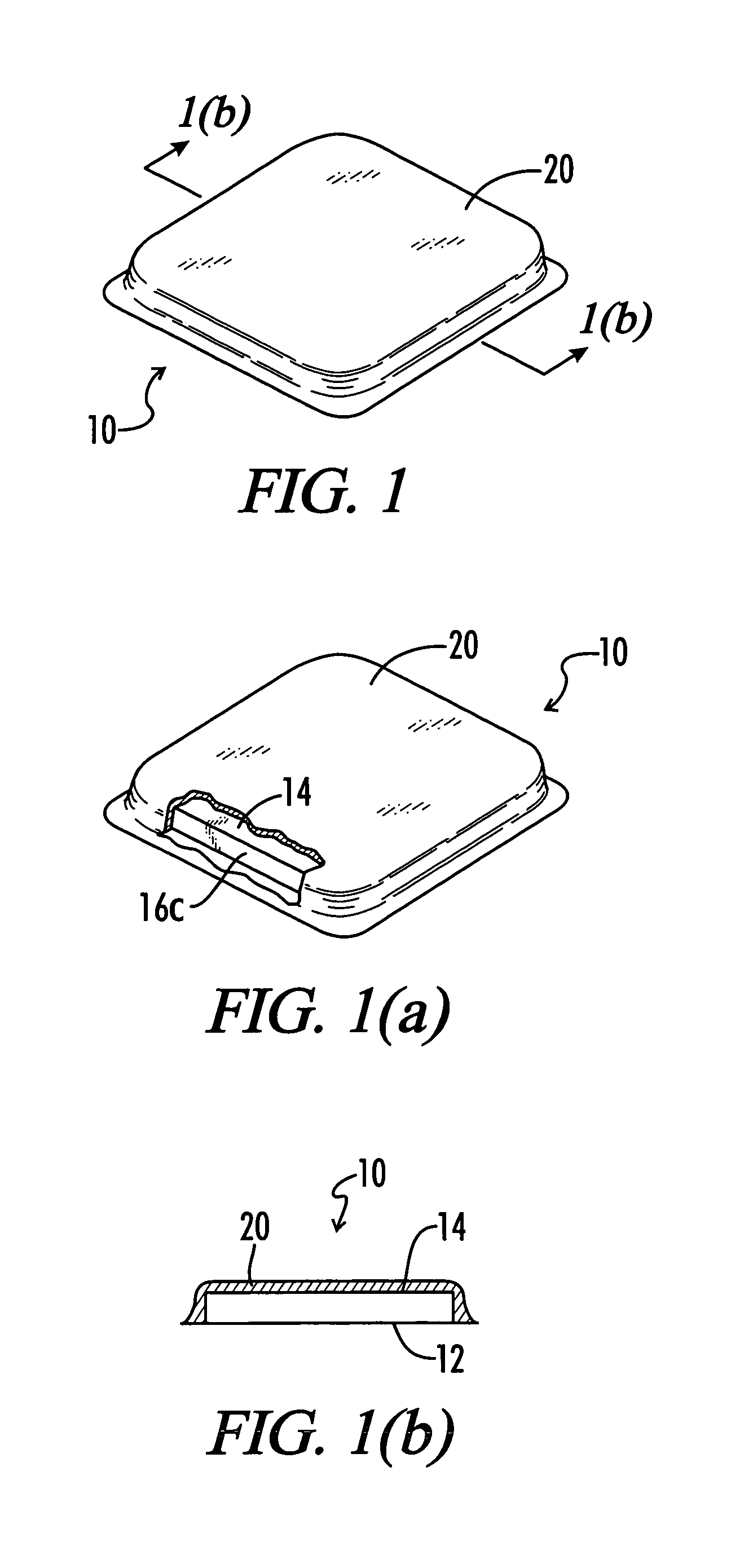Isolated thermal interface
a thermal interface and isolation technology, applied in the direction of chemistry apparatus and processes, synthetic resin layered products, coatings, etc., can solve the problems of system failure, affecting the performance of the overall system, and affecting the performance of the individual components
- Summary
- Abstract
- Description
- Claims
- Application Information
AI Technical Summary
Benefits of technology
Problems solved by technology
Method used
Image
Examples
Embodiment Construction
[0025]Referring to the drawings in detail, a thermal interface prepared in accordance with the present invention is shown and generally designated by the reference numeral 10. It should be noted that for the sake of clarity not all the components and elements of interface 10 may be shown and / or marked in all the drawings. Also, as used in this description, the terms “up,”“down,”“top,”“bottom,” etc. refer to thermal interface 10 when in the orientation shown in FIG. 1(a). However, the skilled artisan will understand that thermal interface 10 can adopt any particular orientation when in use.
[0026]Thermal interface 10 is intended to be used to facilitate the dissipation of heat from a heat source, more particularly from an electronic component (not shown). The electronic component can comprise any electronic device or component that produces sufficient heat to interfere with the operation of the electronic component or the system of which the electronic component is an element, if not ...
PUM
| Property | Measurement | Unit |
|---|---|---|
| thickness | aaaaa | aaaaa |
| thickness | aaaaa | aaaaa |
| density | aaaaa | aaaaa |
Abstract
Description
Claims
Application Information
 Login to View More
Login to View More - R&D
- Intellectual Property
- Life Sciences
- Materials
- Tech Scout
- Unparalleled Data Quality
- Higher Quality Content
- 60% Fewer Hallucinations
Browse by: Latest US Patents, China's latest patents, Technical Efficacy Thesaurus, Application Domain, Technology Topic, Popular Technical Reports.
© 2025 PatSnap. All rights reserved.Legal|Privacy policy|Modern Slavery Act Transparency Statement|Sitemap|About US| Contact US: help@patsnap.com



